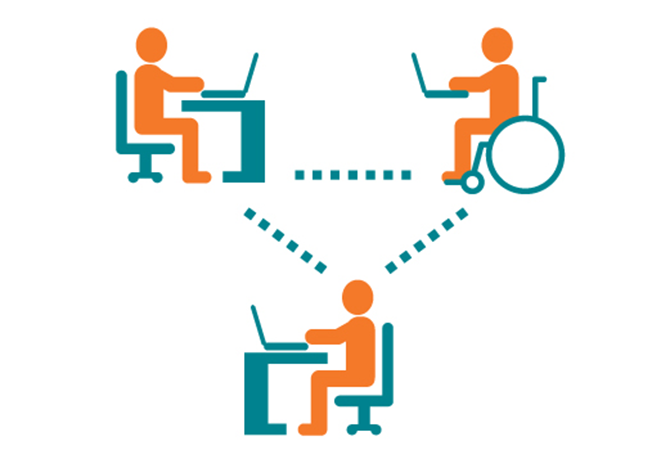Looking to the future, 63% of participants in our employer survey said that they planned to introduce or expand the use of hybrid working to some degree, combining time in the workplace with time at home, depending on the needs of the job, the individual and the team, and the team working practices.
This report builds on our earlier research into homeworking during the pandemic and uses qualitative and quantitative research to identify seven strategies which organisations can use to make a success of hybrid working.
While these findings are based on UK research, the broader trends and implications should be of interest wherever you are based.
7 strategies to make hybrid working successful in your organisation
Develop the skills and culture needed for open conversations about wellbeing
Many managers reported that they found it harder to pick up on how staff were feeling when working remotely. In a remote environment, managers need to create opportunities to talk about non-work issues and actively encourage openness to talk about wellbeing. Employers should:
- Upskill managers to discuss wellbeing confidently.
- Create an organisational focus on wellbeing.
For more information on having open conversations, see pp11–12 of the report.
Encourage boundary-setting and routines to improve wellbeing and prevent overwork
Many interviewees recognised that the loss of boundaries – in time and place – could lead to working longer hours. In addition to longer hours, the temptation to work without taking breaks could also be a challenge. To tackle this, HR should support managers and employees to:
- Establish boundaries and routines – and monitor them across the team.
- Take breaks between video calls.
- Notice signs of overwork.
For more information on boundary-setting and routines, see pp12–13 of the report.
Ensure effective coordination of tasks and task-related communication
A number of interviewees recorded having to change the way that they co-ordinated work when it was performed remotely. To assist with this, employers should:
- Set clear objectives.
- Calibrate the frequency of task-related communication.
- Develop more deliberate task-related communication.
For more information on the coordination and communication of tasks, see pp14–15 of the report.
Pay special attention to creativity, brainstorming and problem-solving tasks
Some tasks were harder to do remotely than others: brainstorming and problem-solving were often cited as particularly difficult, because some of the shared ideas, energy and creativity was lost. To tackle this:
- Take time to explore the functionality of the technological solutions.
- Identify which tasks are more effective face-to-face.
For more information on creativity, brainstorming and problem-solving, see pp15–16 of the report.
Build in time – including face-to-face time – for team cohesion and organisational belonging
The enforcement of total homeworking, without any opportunity to meet face-to-face, over an extended period of time, undoubtedly challenged engagement. HR directors were aware of the challenge of maintaining an organisational culture virtually. Solutions include:
- Creating common purpose across the organisation.
- Building personal and team relationships online.
- Building in face-to-face time, post-pandemic.
- Timetabling co-located working within teams.
For more information on team cohesion and organisational belonging, see pp16–18 of the report.
Facilitate networking and inter-team relationships
While intra-team networking might be taken care of by organising online team meetings and socials, inter-team networking shouldn't be left to chance. Employers should aim to:
- Create opportunities for co-working with other teams.
- Encourage inter-team relationships and networking at organisational level.
For more information on networking and inter-team relationships, see p18 of the report.
Organise a wider support network to compensate for the loss of informal learning
While informal learning can take place at any point, interviewees recognised several points at which learning needs were particularly intense. The challenge was not limited to technical learning about the job, but extended to learning about the organisation. To ensure informal learning can continue, employers can:
- Recognise the points when learning needs are more intense.
- Organise more structured development opportunities.
For more information on support networks, see pp19–20 of the report.
Download our flexible working report and case studies to learn more about our findings and recommendations











